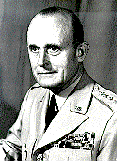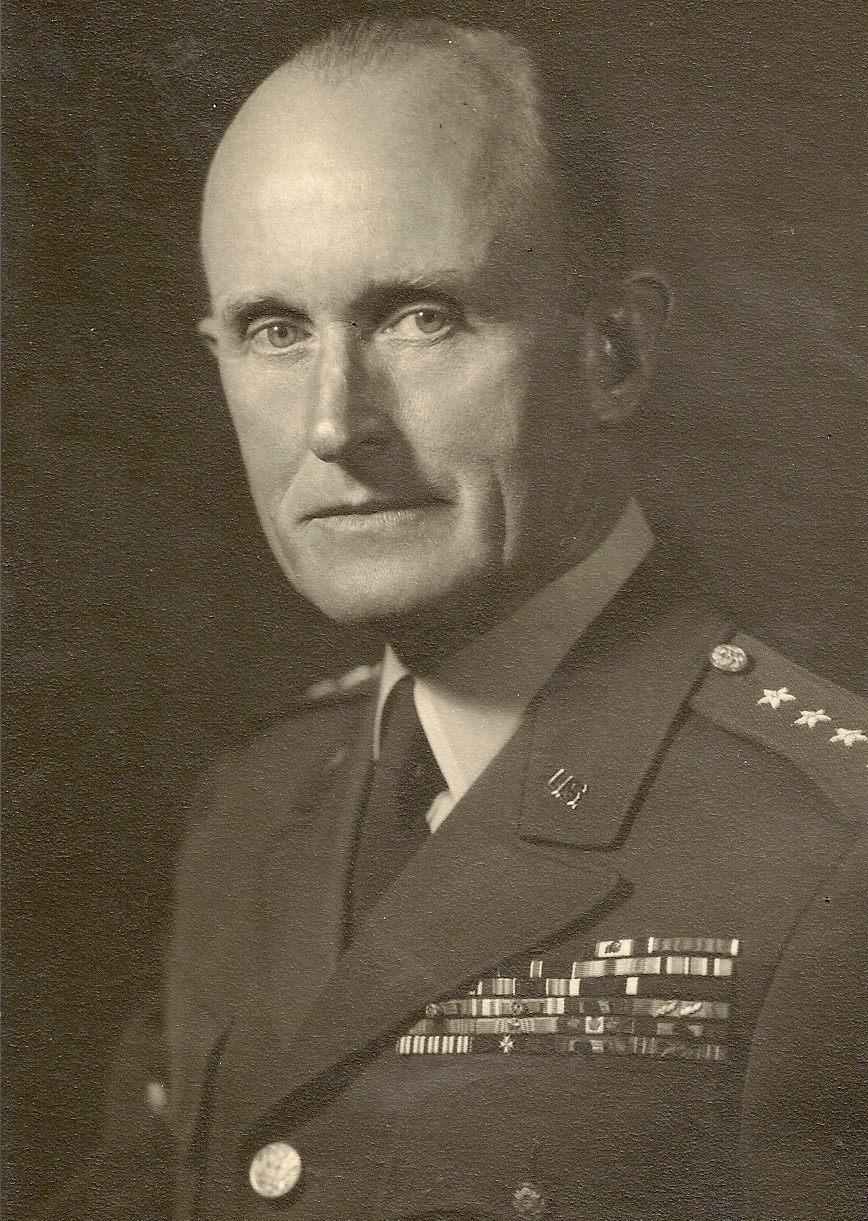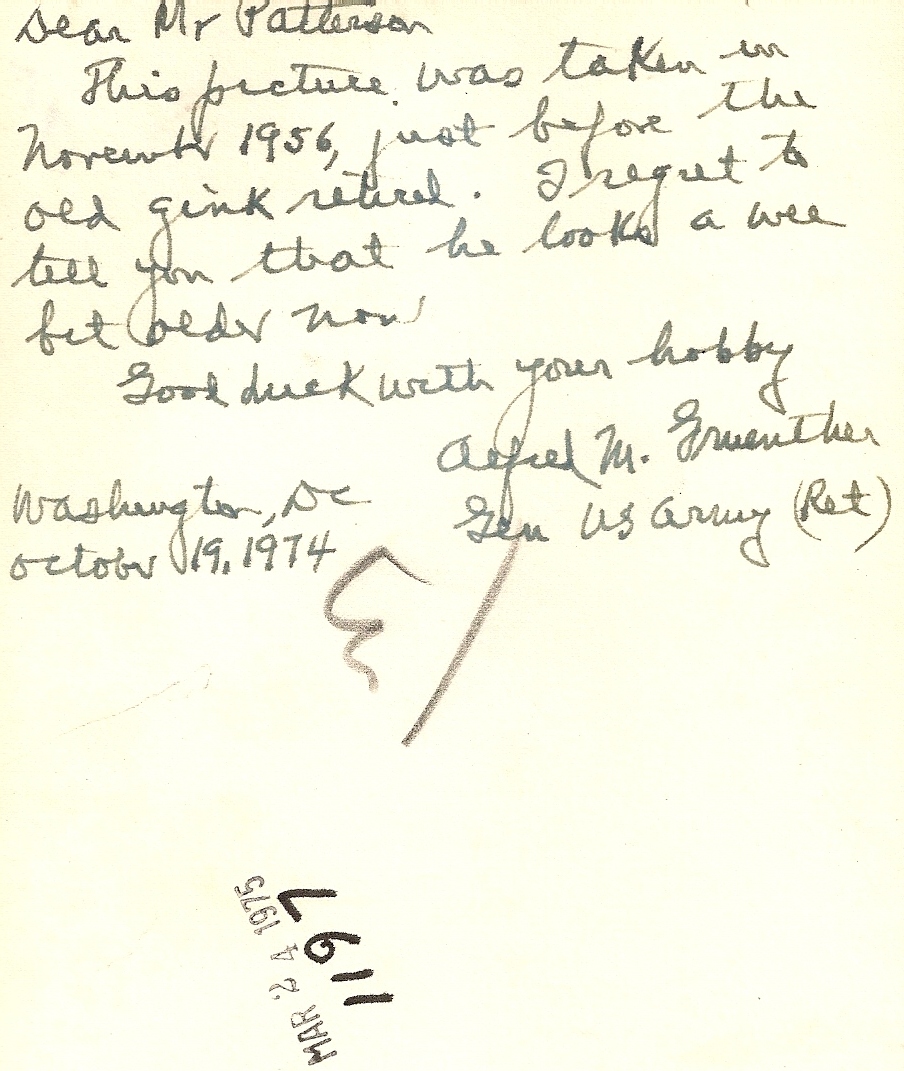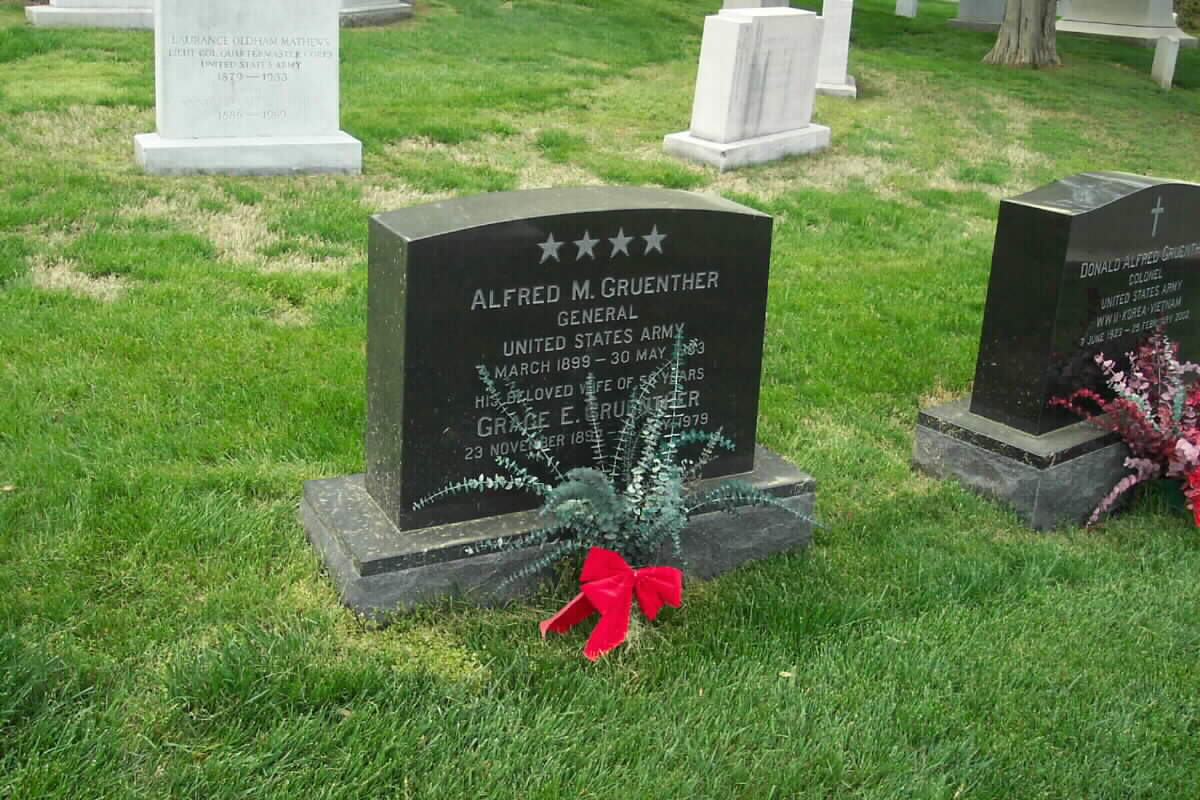Born at Platte Center, Nebraska, March 3, 1899, he graduated from West Point in 1917.
He became famous for the quality of his staff and tactical planning work, becoming World War II’s youngest Major General.
After the war, he served as Supreme Allied Commander in Europe from 1953 to 1956 as a Full General. Pretty exclusive company when one considers those who have held this office (Dwight D Eisenhower, 1951-1952( later President of the United States); Matthew B Ridgway, 1952-1953 (who later was Army Chief of Staff); Lauris Norstad, 1956-1962; Lyman L Lemnitzer, 1963-1969 (who later was Chairman JCS); Andrew J Goodpaster, 1969-1974; Alexander M Haig, 1974-1979; Bernard W Rogers,1979-1987; John R Galvin, 1987-1992; John M Shalikashvili, 1992-1993 (later Chairman of the JCS);George A Joulwan, 1993-1997; Wesley K Clark, 1997-2000.
General Alfred M. Gruenther retired after 38 years in the U.S. Army on December 31, 1956, and on the following day he became President of the American Red Cross. His final military assignment was as Supreme Allied Commander, Europe, a position which he occupied at SHAPE Headquarters in Paris from July 1953 until he retired.
He brought with him a warm enthusiasm for the Red Cross. Having seen the organization function effectively during World War II and in peacetime, he had been deeply impressed with the humanitarian principles underlying the world-wide programs of the organization. Early in his administration General Gruenther became convinced that one of his principle duties would be the telling of the Red Cross story. His strenuous schedule took him back and forth across the United States scores of times. On June 25, 1963, at Elkhart, Indiana, he filled his 748th speaking engagement as the American Red Cross President.
He was the official representative of the American Red Cross at the League of Red Cross Societies and was a member of the Executive Committee of the League, which has its headquarters in Geneva, Switzerland. He served as vice chairman of the League and a member of the Standing Commission of the International Red Cross. General Gruenther’s first major international Red Cross meeting was at the nineteenth International Red Cross Conference in New Delhi, India, in 1957. Since then, he has visited 31 Red Cross and Red Crescent societies, including those of Canada, Japan, the Phillippines, Indonesia, Australia, India, Pakistan, Turkey, Poland, the U.S.S.R., and nearly all of the Western European societies. In February 1962, he went to Panama to participate in the Gray Lady training course conducted by the American Red Cross to help start the Gray Lady program in Panama and the five countries of Central America. He also visited the Red Cross societies of Chile, Peru, Argentina, and Brazil. He devoted much time to the Red Cross Blood Program, which at that time supplied more than 45 percent of the more than 5 million pints of blood used in blood transfusions in the United States. He was always eager to explain to audiences the Red Cross program for the conversion of outdated blood into blood fractions, the research program for the preservation of whole blood, and the program for the classification of rare blood types. He credited Red Cross blood with saving the life of his son when he was seriously wounded in combat in Korea. Perhaps his greatest Red Cross interest was the development of the Red Cross youth program as a means of preparing young people for community and national volunteer leadership responsibilities. General Gruenther was decorated by the United tates and 14 other governments nd by nine Red Cross societies. He received honorary degrees from 32 American colleges and universities. General Gruenther reached the mandatory Red Cross retirement age of 65 early in March 1964, and he retired at the end of that month.
He died in Washington, D.C. on May 30, 1983 and was buried in Section 7 of Arlington National Cemetery.
His wife, Grace E. Gruenther (November 23, 1897-May 18, 1979), is buried with him.
Courtesy of Julie Blum, Columbus Telegram
Columbus, Nebraska 68601
He was the boy who used to wear knickers to school.
Other classmates would tease Alfred Maximilian Gruenther, calling him a sissy because of his knee-high pants.
Obviously none of them knew the Platte Center native would one day become a four-star general in the U.S. Army.
Now, the boy who used to be teased is being honored by the village of Platte Center.
A Nebraska Historical Marker placed near the Platte Center Auditorium tells about Gruenther, a protégé of Gen. Dwight D. Eisenhower during World War II.
Leo Mark, the father of Jerome Mark of Platte Center, was a classmate of Gruenther in the early 1900s.
Despite his short pants, Jerome said his father had only good things to say about the future war hero.
“He was very intelligent,” Jerome said of Gruenther.
In fact, Gruenther graduated fourth in his class from the U.S. Military Academy at West Point in 1918.
Jerome is a member of the Platte Center Sign Committee, the group that got the ball rolling on the project.
Jerome said the group wanted to honor Gruenther in a similar way the Columbus Andrew Jackson Higgins Memorial hails what Higgins did in World War II.
“The Andrew Jackson Higgins (Memorial) gave us incentive,” Jerome said. “There haven’t been many towns with a four-star general from them.”
Not only does the project honor the war hero, but it will help inform people who may not know who Gruenther was.
Born on March 3, 1899, to Christian and Mary Shea Gruenther in Platte Center, Alfred went on to graduate from West Point. He served as chief of staff of the Third Army, Fifth Army, Fifteenth Army Group, and Supreme Headquarters, Allied Powers in Europe between 1941-53. He was principal American planner of the allied invasions of North Africa in 1942 and Italy in 1943.
After World War II, he became deputy commander of U.S. forces in Austria in 1945, and was appointed supreme allied commander in Europe/commander-in-chief of the U.S. European Command in 1953.
When he retired, Gruenther was president of the American Red Cross from 1957-64 and served on four corporate boards and three presidential commissions.
On May 30, 1983, Gruenther died in Washington, D.C. He is buried at Arlington National Cemetery.
The historical marker, which will be dedicated at a ceremony slated for July 4, was put up about a month ago and was funded through many donations from distant relatives to Gruenther and local businesses.
Donations to the project were given by Gruenther’s son, Richard Gruenther, of St. Augustine, Fl., Louis Brunker of Omaha, and Jim Brunker of Seattle, distant cousins to Gruenther, and Byron Stratan, a relative from Omaha, Tri-Valley Co-op and Schumacher Irrigation Inc. in Platte Center also gave donations.
It cost about $8,500, but the marker is just the beginning of the project. Mayor Gary Penne said in the coming months trees, park benches and cement sidewalks will be added around the area creating a place where people can gather.
“It’s going to be nice,” Penne said.
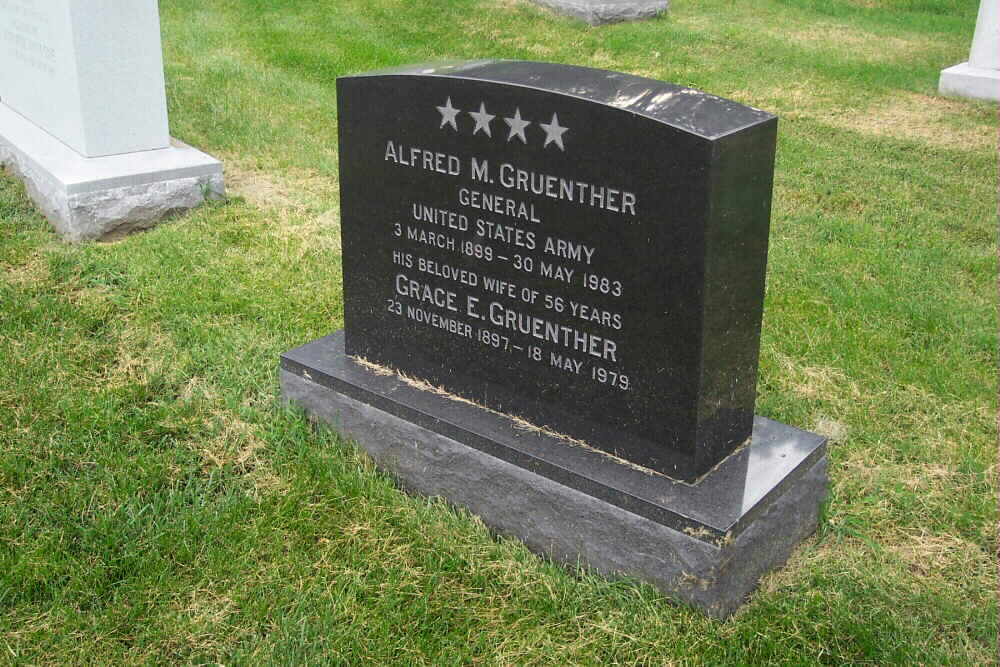
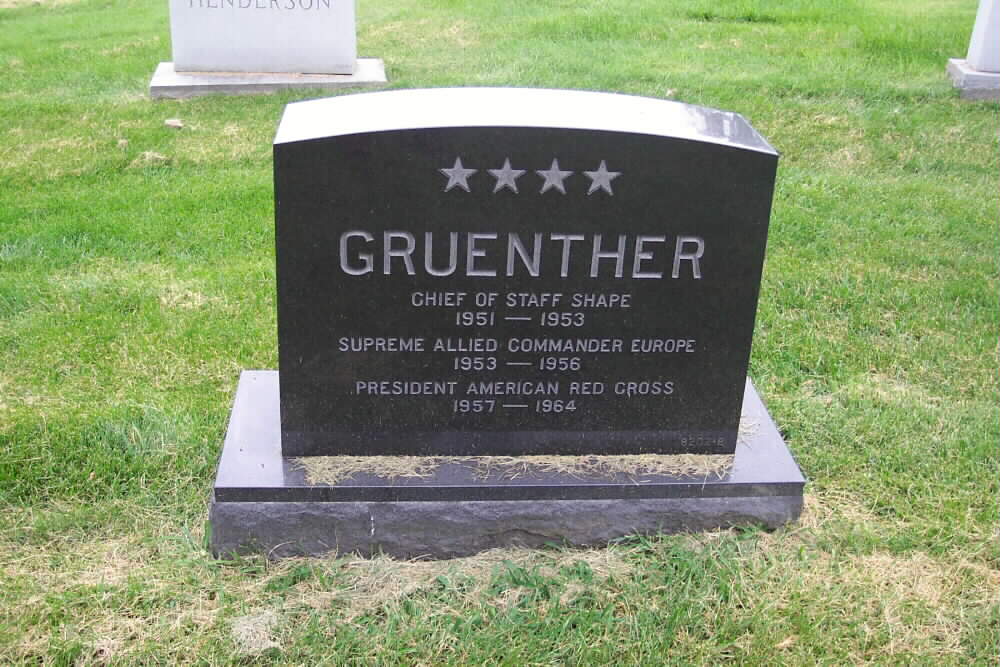
Michael Robert Patterson was born in Arlington and is the son of a former officer of the US Army. So it was no wonder that sooner or later his interests drew him to American history and especially to American military history. Many of his articles can be found on renowned portals like the New York Times, Washingtonpost or Wikipedia.
Reviewed by: Michael Howard

